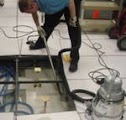Businesses are connecting more devices, people, and processes in their attempt to gain a competitive advantage, and are undergoing a digital workplace transformation. The Digital Workplace extends the benefits of the Internet of Things (IoT), changes the way buildings operate, and how workers connect to the technologies in place. When fully implemented, the Digital Workplace will offer building occupants a combination of information, efficiency, convenience, security, and comfort. Operating costs are lower, and more detailed analytics are now possible across the system. Deeper insight means improved efficiency, and, ultimately, smarter business decisions.

Download this FREE CHECKLIST to ensure you don’t forget the cost of any of the technologies you will use in your next commercial/industrial workplace renovation or new construction project…
Lower Costs and Simpler Management
The Digital Workplace yields major cost savings by converging previously disparate networks over a single, centrally controlled architecture using IP and Power over Ethernet (PoE). The Digital Workplace delivers the essential capabilities needed to make these cost savings a reality:
- Reduced power and lighting costs
- Streamlined maintenance
- Simplified installations
- Reduced operating expenses
- Optimized energy efficiency
- Shift from capital investments to operational savings
Digital Workplace Efficiency:
- Lower-cost, more efficient workplaces: The Digital Workplace lowers the cost of workplace system installation, operation, and management through unified communications and centralized control of global facilities. As a result, it is easier to automate workplace services.
- Transformative new experiences: Different systems (lighting, heating, and air conditioning, as well as communications, A/V, physical security and access control) can now easily and securely work together. They can adapt to users’ needs in real time to make spaces work better for individuals, groups, functions, and teams, while significantly improving the productivity, safety, and comfort of facility occupants.
- New business insights through analytics: By combining connected endpoints with sensors, organizations gain deeper insights into how employees, customers, and guests utilize indoor spaces. You can adapt workspaces to improve productivity and efficiency, and make better use of valuable real estate. You can also glean concrete data to inform decision making about facility operations and planning.
- Increased/seamless security: Advanced security features provide comprehensive threat intelligence and defense by using the network as a sensor and enforcer.
















